My Blog - Jeff Clarke
Updates and photos from around the world on my travels both through pleasure and work
South Africa: Part 2 - Fynbos Karoo
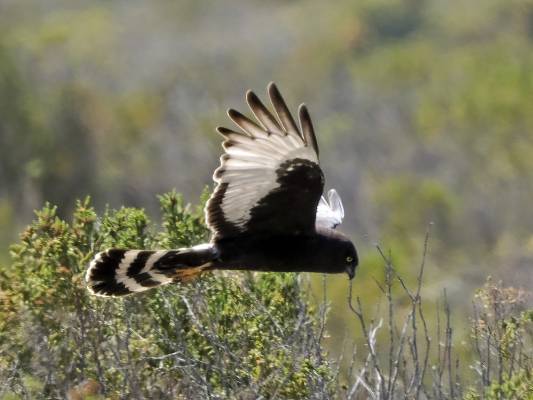
Click on the images to view at full size.
Just a two-hour drive north of Cape Town, there is a kingdom of flowers and birds. The West Coast National Park abuts the Eastern Atlantic and sits barely an ostriches-stride south of the coastal town of Langabaan.
Our second base, on the very southern edge of the town, had a small, high-walled, garden, that nevertheless attracted plenty of interesting birds, including Acacia Pied Barbet and Red-faced Mousebird, partly because it was the last house before an undeveloped, fynbos covered, promontory viewpoint overlooking Shark Bay.
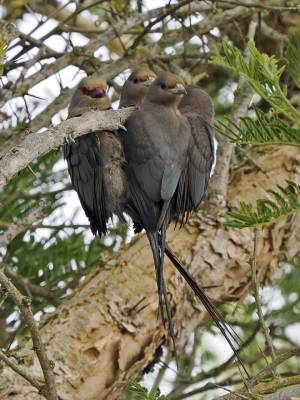
Red-faced Mousebird family group, Langabaan Dec 2022 © Jeff Clarke

Acacia Pied Barbet Langabaan Dec 2022 © Jeff Clarke
A walk on the promontory provided a taste of what we could expect in the neighbouring National Park, with Small Grey Mongoose, Grey Winged Francolin and Karoo Scrub-robin quickly found. A sunrise saunter produced even more variety with a party of confiding Cape Penduline Tits being a notable delight.

Small Grey Mongoose trio Langabaan Dec 2022 © Jeff Clarke

Grey-winged Francolin West coast NP. Dec 2022 © Jeff Clarke

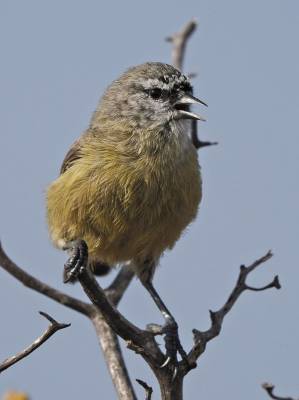
Karoo Scrub-robin (left) Cape Penduline Tit (right) West Coast NP Dec 2022 © Jeff Clarke
There are two gated entrances to enter the National Park. We chose the southern one on our first morning, so that we would have the light behind us most of the time. The majority of large mammals here, such as Eland and Bontebok, have been reintroduced, there are no large predators bar the rare Cape Leopard, a small sub-species, incapable of tackling such large prey. We were here primarily for the birds, and they abounded. Our primary goal was Black Harrier, even better if I could get some decent images. Seeing this very smart harrier in the West Coast National Park wasn’t that difficult, seeing it at close quarters took a little longer. It quartered the ground in typical fashion, concentrating on the grassy areas and patches of lightly shrubbed fynbos. On our first day in the National Park, I snapped one carrying a stripey mouse, on my second chance I rather messed up a brilliant opportunity by not noticing I’d knocked the image stabiliser to ‘off’ on my lens and this meant rather ‘soft’ images.
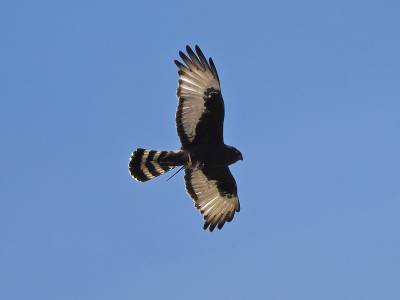

Black Harrier - West Coast NP Dec 2022 © Jeff Clarke
Arguably the commonest raptor in the park was Black-shouldered Kite, at least one would be almost constantly in view, usually hovering in their characteristic halting, slow-wing beat style. Nearly all the ones we looked at closely were immature birds and most were surprisingly skittish, we did eventually secure some pleasing images of this gorgeous bird. Rock Kestrels were almost equally abundant and thankfully a little more approachable, though the one crunching its way through a large grasshopper whilst perched on a roadside sign was exceptionally blasé about humans in cars.

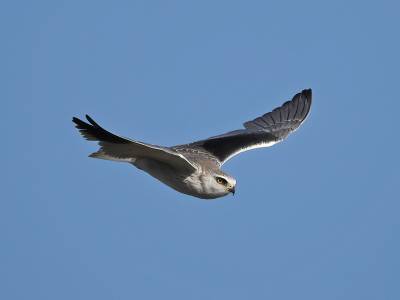
Black Shouldered Kite West Coast NP Dec 2022 © Jeff Clarke

Rock Kestrel - West Coast NP. Dec 2022 © Jeff Clarke
Pre-trip one of the birds I’d most looked forward to seeing was the onomatopoeically named Bokmakierie, a colourful member of the bush-shrike family. They respond quite well to ‘pishing’ so we obtained quite a few sightings, though only one immature bird approached really close and perched beautifully illuminated by a low sun.
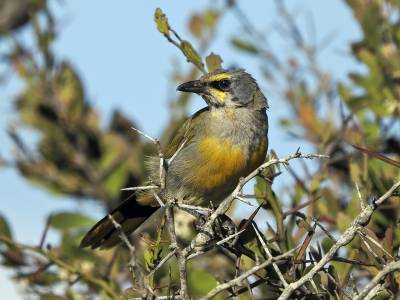
Bokmakierie - West Coast NP. Dec 2022 © Jeff Clarke
One thing you notice about the ground under the fynbos is the vast quantity of burrow mounds, these are created by a variety of animals but the majority in the national park appeared to be the work of the Cape Golden-mole, so it was no surprise when we encountered a couple of mole-snakes, their black scales glinting in the sunshine, as they assiduously worked the burrow systems in search of their favourite prey. Tortoises are very common in the park, all the ones we chanced upon were Angulate Tortoise. They are surprisingly ‘nippy’ and you had to keep a careful eye out for them as you navigated the park’s road system.
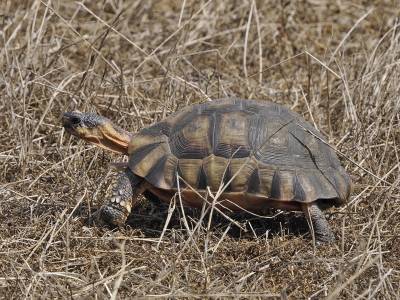
Angulate Tortoise - West Coast NP, Dec 2022 © Jeff Clarke


Mole Snake - West Coast NP. Dec 2022 © Jeff Clarke
Arguably the most famous ornithological aspect of the park is the number and diversity of waders that can be observed along the lagoon edge. The best place to enjoy this is from the two hides at the Geelbek homestead in the central/southern area of the park and also the Seeburg hide in the north of the park. The two commonest species present, by far, were Little Stint and Curlew Sandpiper, both of which were in full winter garb, backed up by other ‘northern’ migratory species such as Ringed Plover, Sanderling, Greenshank, Eurasian Whimbrel and Eurasian Curlew, at times you could be forgiven for thinking you were back in Northern Europe, and then you’d notice the flocks of Greater and Lesser Flamingos pootling about, together with local waders such as Kittlitz’s Plover.
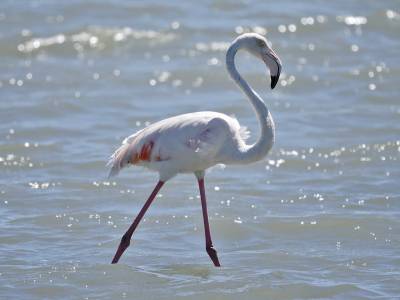
Greater Flamingo - West Coast NP, Dec 2022 © Jeff Clarke

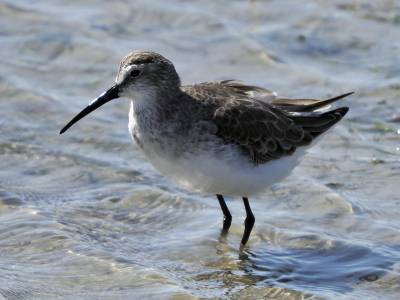
Little Stint (left) & Curlew Sandpiper (right) - West Coast NP, Dec 2022 © Jeff Clarke
One of the most productive parts of the park was the Abrahamskraal freshwater pan, the only such area of permanent freshwater in the whole park. It was a magnet for wildlife. The hide overlooking the site had nesting White-throated Swallows within it. The adults were remarkably unphased by human presence, frequently perching within an arms-length of the observers within. This was in stark contrast to the most vociferous of resident birds at the water hole; the monochromatic Blacksmith Plovers, any hint of human proximity and they would erupt in cacophonous protest.
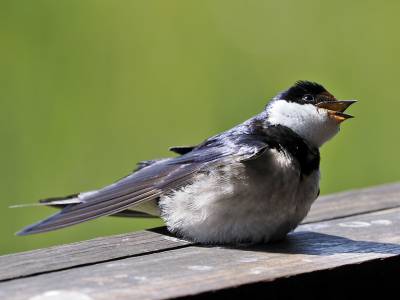
A White-throated Swallow sunbathes on the window lip of the hide - West Coast NP, Dec 2022 © Jeff Clarke
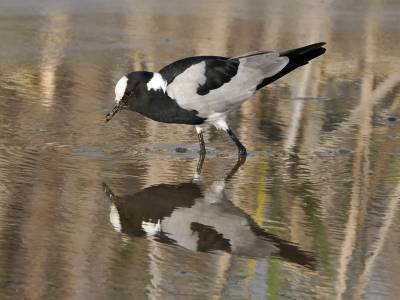
Blacksmith Plover - West Coast NP, Dec 2022 © Jeff Clarke
As the sun dipped towards the western horizon, we made our way to the northern portion of the park. In gorgeous evening light we were treated to a profoundly confiding encounter with a truly fabulous bird, sublime of plumage in perfect light a male Southern Black bellied Korhaan strutted confidently in our midst. At times he approached so closely to our vehicle that I couldn’t get any of the bird in the frame, except his head. I was beguiled by this bird and almost forgot to take some photographs of the Helmeted Guinea fowl that vied for our attention, thought they largely tried in vain.
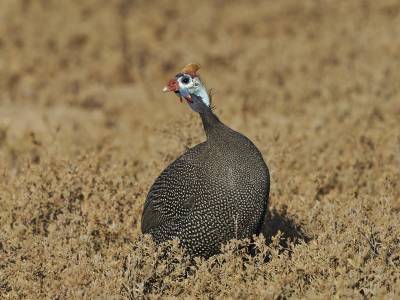
Helmeted Guinea-fowl - West Coast NP, Dec 2022 © Jeff Clarke

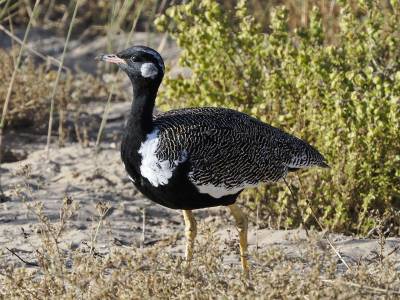
Southern Black Korhaan - West Coast NP, Dec 2022 © Jeff Clarke
The following morning we entered the park as the gates opened at 7am, this time starting at the northern end. We headed for Seeberg hide, mainly for its wading bird potential. It was here that we obtained, by far, our closest views of Kittlitz’s plover, but probably the highlight was a male Common Ostrich dropping to his haunches to put on his nuptial display. Sadly, for him, the females that were present were entirely indifferent to his efforts.

Kittlitz's Plover - West Coast NP, Dec 2022 © Jeff Clarke

Ostritch male displaying - West Coast NP, Dec 2022 © Jeff Clarke
The species list for the day was similar to day one, so most of it was spent improving on the odd photograph, or trying to capture additional species, like Cape Shoveler and Yellow-billed Duck. It was a very pleasant and relaxing day. Two days scouring this park will probably give you the opportunity connect with most of its special wildlife.
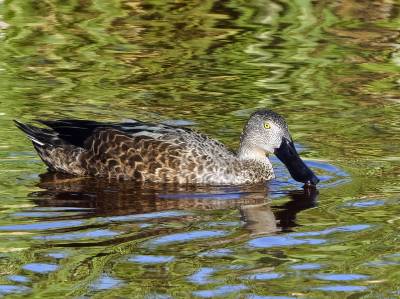
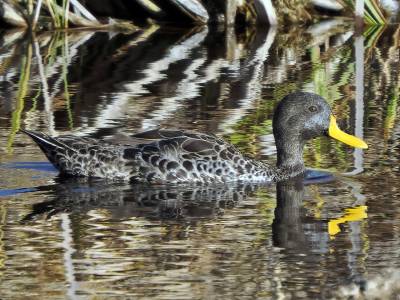
Cape Shoveler (left) Yellow-billed Duck (right) - West Coast NP, Dec 2022 © Jeff Clarke
These national parks are principally about protecting the specialised wildlife, humans are a secondary consideration There are only a few locations within the West Coast National Park where you are allowed to explore on foot, much of the viewing is done from a vehicle, even though the big predator threat is nil.
By way of stark contrast, our final destination in South Africa would be a foolhardy place to wander aimlessly away from the confines of your car.

